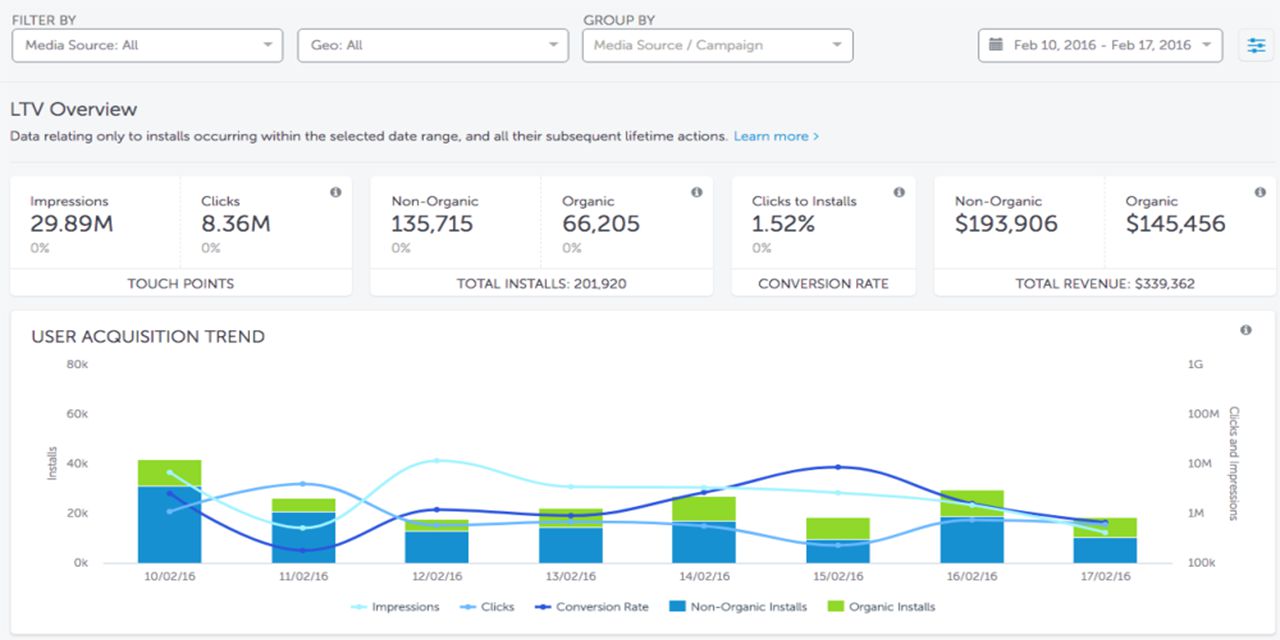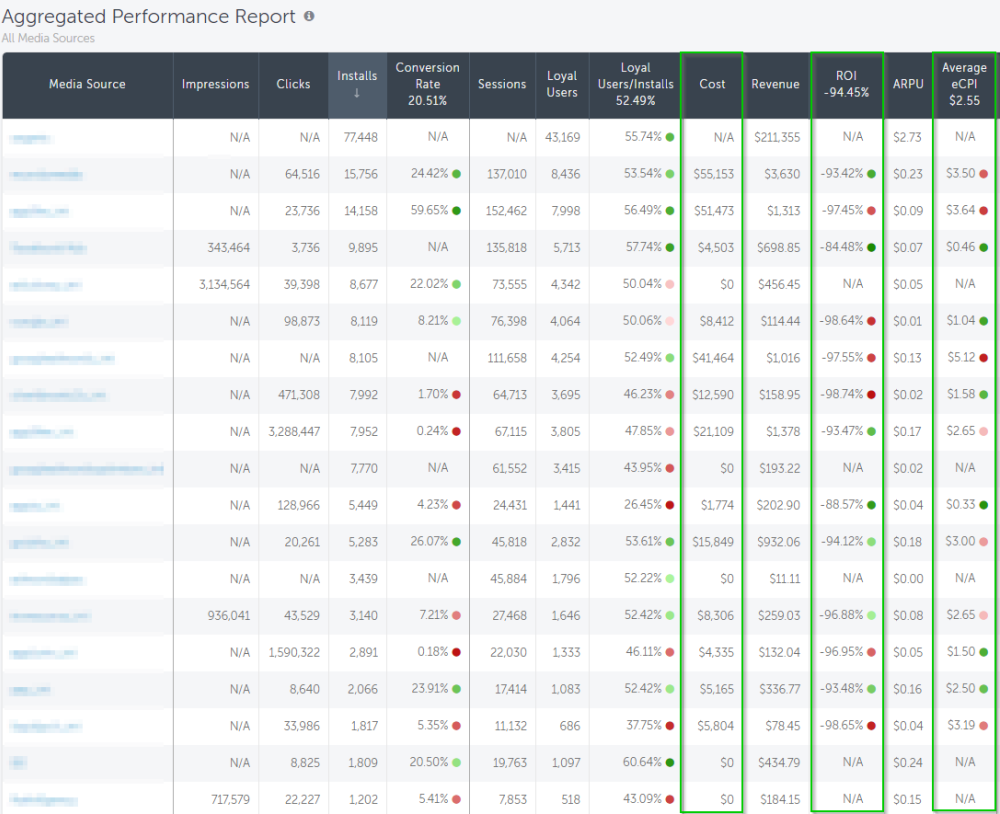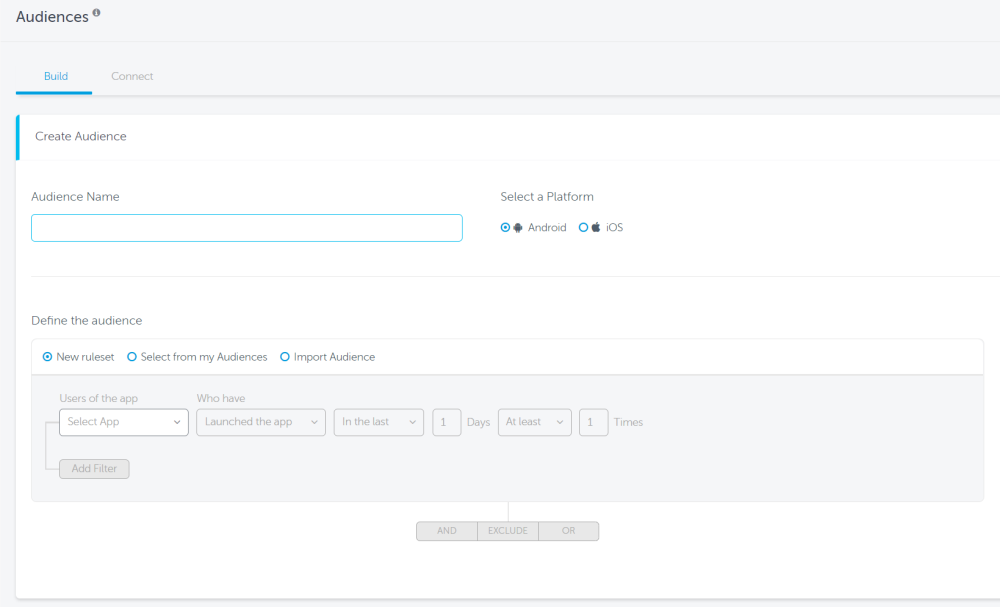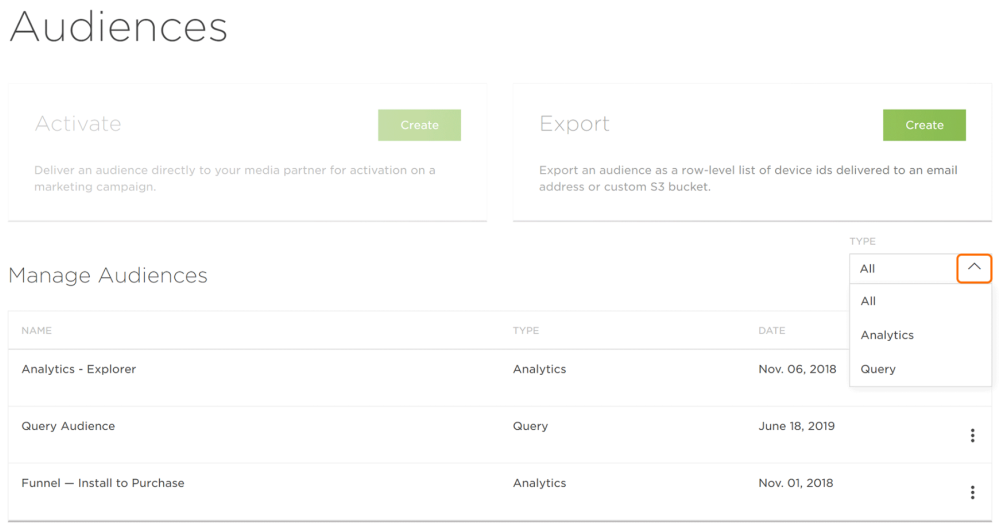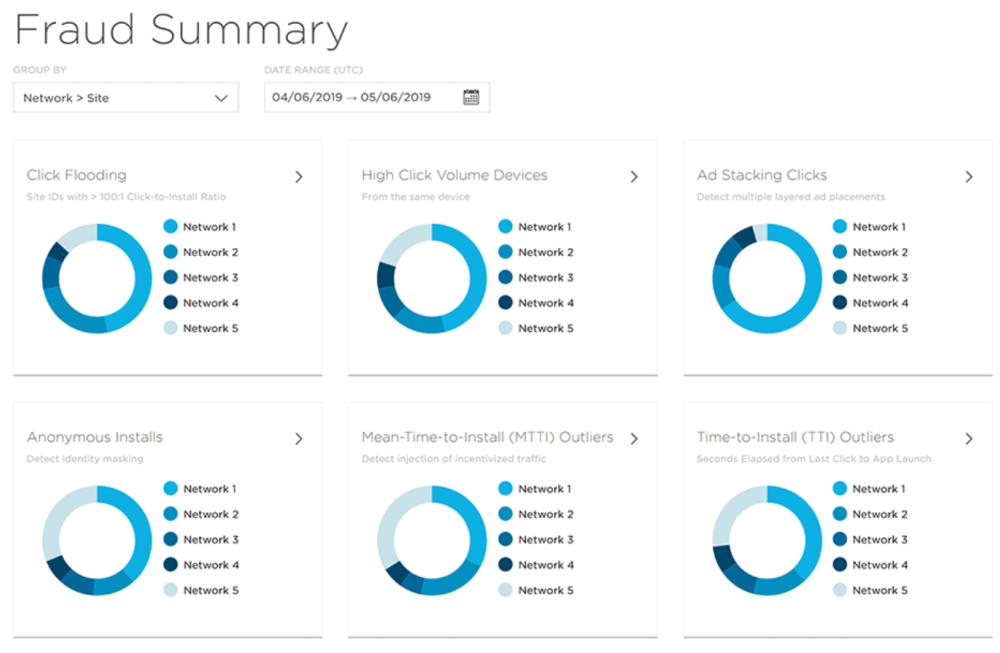As an acquisition marketer for a mobile app, do you really know how people first learn about your product? Exactly what drives them to install the app? How do they interact with it after installing it? Are there certain media touchpoints or messaging iterations that people commonly see before becoming your highest-value users?
To know the answers to questions like these, you need to use a mobile app attribution platform that allows you to install a mobile app tracking SDK. Your app’s developers will integrate the SDK into the product’s code, which then allows the app to communicate with the attribution platform.
This way, your attribution platform is able to provide rich attribution data to marketers in real-time, enabling them to make data-driven, user acquisition spend decisions.
So, for example, if a user clicked on an ad while playing a game and proceeded to install your app, the SDK would let the attribution platform know if they’re a first time user, which specific ad led to an install, and much more.
In this article, we’ll compare AppsFlyer and Kochava, two popular mobile app attribution platforms, to help you decide which option is right for your business. But before we begin, let’s quickly take a look at some of the key features you should look for in mobile app attribution tools.
Features to Look for in Mobile App Attribution Platforms
For those unfamiliar, mobile app attribution is all about identifying how, when, and where users learn about your app and monitoring user interactions and touchpoints across platforms. For instance, app marketers might use it to gather insight into what drives users to install the app and monitor trends in app installs over time. This information allows acquisition marketers to optimize the path users take to eventually become customers and maximize ROI.
Unlike the reporting modules offered by the advertising platforms themselves or tools like Google Analytics, mobile app attribution platforms allow marketers to monitor marketing campaigns across multiple advertising channels from a single system.
Another major benefit of using an attribution platform is that mobile app marketers don’t have to worry about the integrity of their data. Advertising platforms have been known to measure ad performance metrics differently from one another and sometimes also differently from the way that marketers do it. This is mostly because it’s in their best interest to report maximum value to their customers, even if some of this value is contrived at best.
Better attribution platforms have a vested interest in serving the needs of their customers, as opposed to racking up media billings, so their data is more trustworthy.
Here are some key features you should look for in a mobile app attribution platform:
- Sophisticated attribution modeling.
This often involves using advanced technology to measure interactions on touchpoints, including deep linking, validation rules, fingerprinting and secure postbacks. It allows marketers to assign different levels of credit to different touchpoints along the customer’s journey, which is key for optimizing campaigns over time. - Marketing analytics.
Gathering insights from multiple data sources, complex analytics lets you combine in-app engagement data with mobile attribution, enabling marketers to optimize user acquisition channel programs and marketing funnel performance. Typically, assuming that maximizing revenue is your objective, this involves correlating metrics that relate to user engagement with those that relate to lifetime value. - Audiences.
Mobile app marketers need to be able to segment audiences in order to discover, re-engage, and retarget users to improve their user acquisition and re-engagement campaigns. - People-based attribution.
This allows app marketers to gain unified access to every touchpoint along the user journey including devices, platforms, and marketing channels. By targeting specific audience members, regardless of where and how they’re seeing your assets, you can better optimize journeys. - Fraud prevention.
This typically involves making sure the data you collect, and the users you onboard, aren’t coming from device farms, bots, or false referrals. It’s also important to opt for a mobile attribution platform that is GDPR-compliant and follows industry security standards.
Now that we have a better understanding of what mobile attribution is and the key features you should look for in an attribution platform, let’s compare two of the most popular mobile app attribution platforms, AppsFlyer and Kochava. We’ll also check out the different ways that each of these platforms handles the features you need.
Factor #1: Mobile Attribution
Mobile app marketers typically run campaigns several different marketing channels. A cross-channel marketing strategy allows you to get ads and organic messaging in front of prospective customers regardless of which platform they’re active on.
Through mobile app attribution, you’re able to gain insight into which specific marketing efforts are driving conversions and which ones should be discontinued.
AppsFlyer’s approach to mobile attribution enables marketers to attribute each app install to the specific marketing campaign (and media source) that drove it. The platform also offers built-in deep linking functionality, which allows marketers to use people-based attribution and to direct users to the correct app store to install the app and display a message once the user installs it to their device.
It’s common for users to interact with multiple ad campaigns and marketing assets before making the decision to install an app. For this reason, AppsFlyer offers multi-touch attribution which enables app marketers to determine exactly which ads drove the user to install the app.
With event monitoring functionality supported as well, it’s easy to use AppsFlyer for post-install journey mapping as well.
Kochava features what they call “fingerprint-based attribution,” which allows marketers to map devices to user clicks and impressions, which is especially useful if gathering the device identifier isn’t possible. It also records device reconciliation which happens whenever a device identifier of a click matches that of an app install. At this point, Kochava does support deep linking, but not with an API.
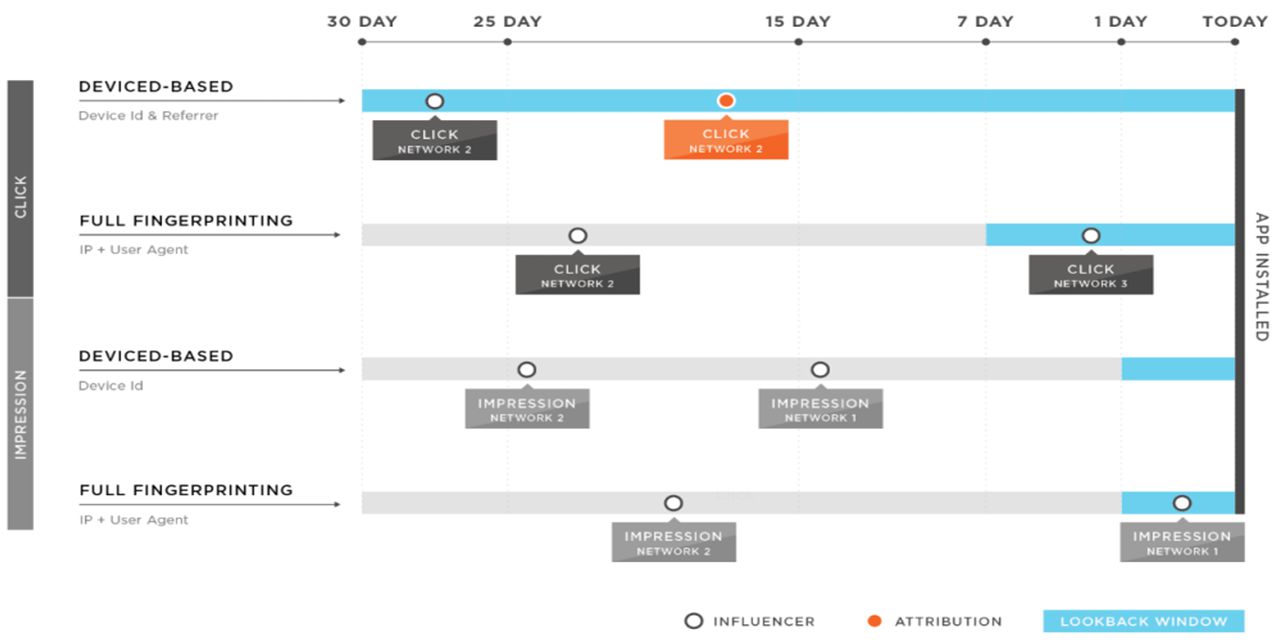
In addition to this, Kochava also supports view-through attribution, which monitors user impressions. This allows marketers to credit installs or in-app events (such as purchases) to a specific impression. Marketers are also able to leverage fractional attribution which simply allows them to define weighted value to different partners based on their attribution position.
Factor #2: Marketing Analytics
Monitoring marketing analytics allows mobile app marketers to determine which campaigns they should continue backing and which ones to discontinue.
AppsFlyer gives acquisition marketers valuable insight into marketing performance through its built-in cohort and retention reporting tools. This makes it easy to see which campaigns are performing well and where there’s room for improvement. In addition to this, the platform also offers a mobile reporting app which allows marketers to monitor marketing performance on the go.
With AppsFlyer, app marketers are also able to stay in the know at all times with its live alerts functionality. Essentially, it makes it easy to keep up with important events when you’re not actively monitoring KPIs at your desk. It also supports custom dashboards, which allows savvy marketers to build campaign-specific views for daily analysis.
One of the standout features on offer with AppsFlyer, the Pivot tool, allows marketers to save, edit and clone custom report views, making it easy to collaborate with your team without having to manually rebuild pivot tables or export them as static spreadsheets. This is incredibly useful for aggregating the marketing performance data points that matter most to you and running deep campaign analyses.
With Kochava, mobile app marketers are able to sort data points, create cohorts to monitor the lifetime value of users and analyze ROI, as well as export data sets into different formats. In addition to this, marketers can visualize data in different views, including footprint view, events volume view and event detail view.

The platform also offers a media cost and ROI analytics tool, which consolidates the data from the analytics dashboard so that marketers don’t manually have to export data to gain insight into cost and ROI. Kochava Intelligence makes it easy for mobile app marketers to stay on top of business intelligence from one location.
Factor #3: Audiences
Mobile app marketers need to be able to segment audiences in order to run effective re-engagement and retargeting campaigns.
With AppsFlyer, marketers are able to leverage the Audience Builder module to dynamically segment audiences using Boolean logic. This ensures that you’re able to get the right message across to each audience segment throughout the user journey. AppsFlyer lets marketers create Venn diagrams to easily visualize different segments and better manage audience overlap and exclusions.
In addition to this, marketers are also able to run A/B tests on audiences to test out different partners, messaging, and bidding types to see which one generates the highest ROI.
Kochava’s audience segmentation and syndication functionality is not as sophisticated as AppsFlyer’s, but it is still powerful in its own right. Here, app marketers can group audiences for re-engagement targeting. This allows you to identify top performing audiences and create lookalike models for campaign activation, suppression list building, and data enrichment.
App marketers can also choose to save dynamic audience segments, link activation partners, and set up delivery schedules. You can also select which audience engagement reports to share with ad partners and gives you the option to export detailed user engagement reports.
Factor #4: People-Based Attribution
Having a unified overview of the user journey allows mobile app marketers to make informed decisions regarding marketing performance optimization.
AppsFlyer’s cross-device, multi-channel approach to people-based attribution enables marketers to reach prospective customers across all sorts of device – desktop, tablet, TV, or smartphone.
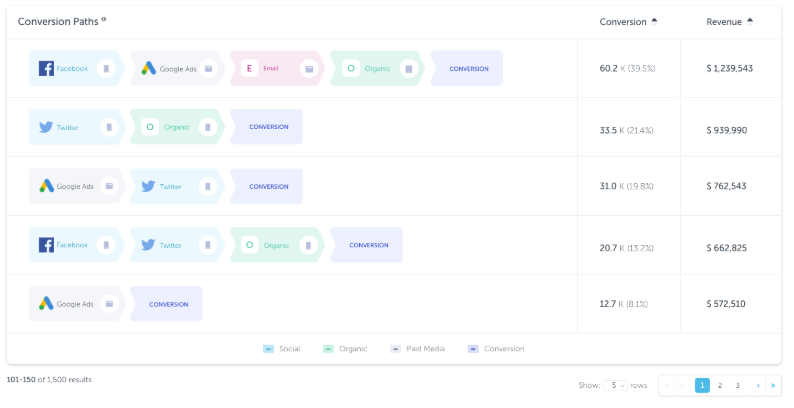
You’re also able to optimize user engagement by setting up sequential messaging across different channels.
Additionally, AppsFlyer makes it easy for app marketers to break down complex data into reports and graphs in order to get actionable insights in real-time.
The platform also has a cool Smart Banners feature, which are incredibly easy to get started with. Marketers can simply pick a template, customize its design, and add their own messaging to it.
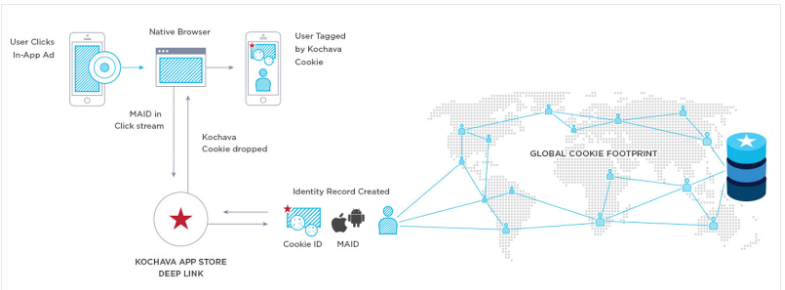
Kochava’s approach to people-based attribution is achieved through two neat features – IdentityLink and Proximity Identification.
- IdentityLink lets marketers associate an internal identifier with a Kochava device identifier so that they’re able to correlate attribution and analytics information in Kochava with user behavior on different devices and platforms.
- Proximity Identification helps marketers gain insight into how app users influence one another allowing them to better understand the user journey.
Factor #5: Fraud Prevention and Data Security
It’s important to opt for a mobile app attribution platform that helps protect against mobile fraud and keeps customer data secure. This helps minimize any chance of a data breach, which could potentially be damaging to your business, or fines for privacy regulation violations.
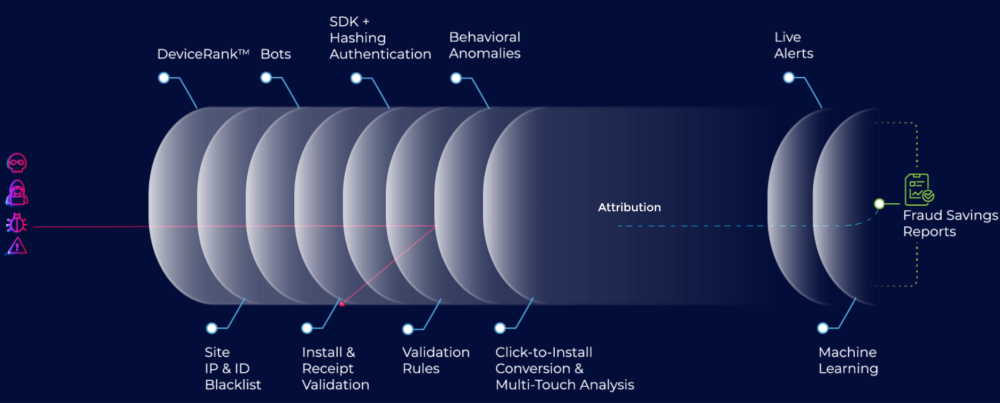
AppsFlyer’s Protect360 feature leverages machine learning and behavioral analysis to provide coverage against mobile fraud. It protects against device farms, bots, and app install hijacking. In addition to this, AppsFlyer’s comprehensive list of compliance guidelines include GDPR, TRUSTe, and ePrivacyseal.
Kochava’s Fraud Console is a suite of mobile ad fraud detection and mitigation tools that report abnormal (or fraudulent) activity from the business’ apps. It also offers fraud detection analytics and a Global Fraud Blacklist.
Conclusion
Mobile app attribution platforms like AppsFlyer and Kochava enable acquisition marketers to gain valuable insight into how users learn about their app and which marketing campaigns drive them to install, use an app and make purchases. And, as a result, they’re able to optimize their campaigns for conversions.
Both platforms do their job quite well. Some major differences are in price structure, supported apps and tracking methods, so it mostly depends on a developers projects and to some extent, taste.


